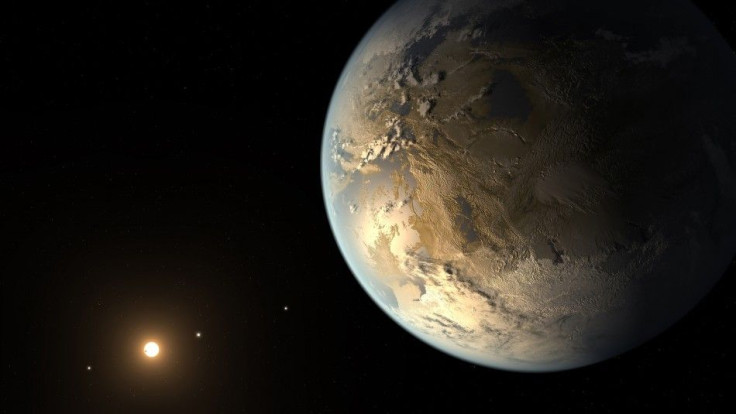Ground Breaking Discovery: Water Found in Atmosphere of Exo-Neptune
Astronomers Have Discovered Clear Skies and Water Vapour in the Planet's Atmosphere

Astronomers have found the smallest exoplanet outside our solar system which is about the size of Neptune. Not just that, the astronomers have made a huge discovery, using data from the NASA/ESA Hubble Space Telescope, the Spitzer Space Telescope, and the Kepler Space Telescope, they have discovered clear skies and water vapour on the planet. The planet is named HAT-P-11b.
This discovery is highly significant as by analyzing the molecules in the atmosphere of these planets, the history and composition of the planet can be found. Usually clouds block the view but Jonathan Fraine, lead author of the study said that clear skies on distant planets would mean that could view water molecules without any hindrance. It could also mean that they could find clear skies in planets that are similar to earth. Fraine is from the University of Maryland, College Park.
HAT-P-11b orbits another star and astronomers state that it has a rocky core and the atmosphere is blanketed by thick gases. Until the discovery of HAT-P-11b, it was not possible to study the composition of any other exo planet. Smaller planets usually have a lot of clouds making it impossible to view what lies beneath them.
According to the press release published on the NASA website, Drake Deming, a co-author of the study also from University of Maryland, USA said that this discovery would help understand more about exoplanets. Study co-author Heather Knutson of the California Institute of Technology in Pasadena said that this is significant with regard to future studies of Super Earths and smaller planets. Knuston said that they want to learn how to choose in advance, the planets that heave clearer atmospheres so that they can detect molecules.
Nikku Madhusudhan, from the University of Cambridge, UK, part of the study team, said that this was a groundbreaking discovery. The planet lies in a patch that is too hot to contain water vapour but they found that the planet contains water vapour, hydrogen gas, and other yet-to-be-identified molecules. Astronomers would now have to rework the models to explain the planets composition, they stated in their paper. The study will be published online in the journal Nature.




















